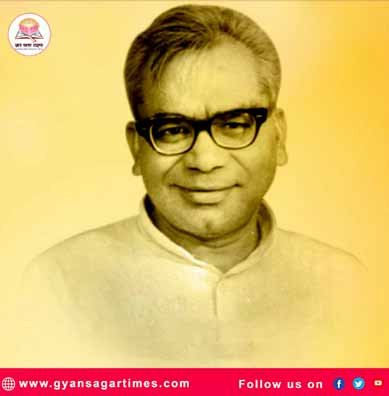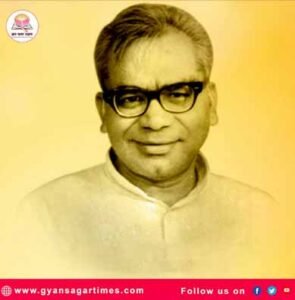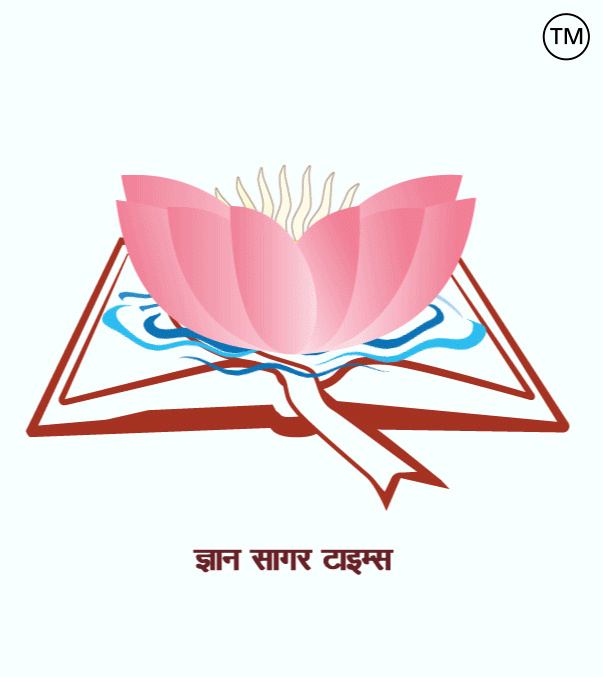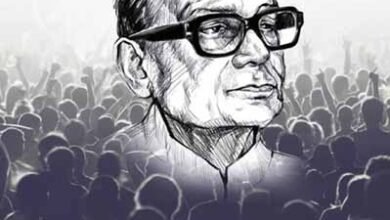
क्या वर्तमान भारत लोहिया का भारत है?…
डॉ. राममनोहर लोहिया समकालीन भारतीय राजनीति के एक ऐसे चिंतक और सिद्धांतकार थे, जिनके विचारों ने दशकों तक भारत की सामाजिक और राजनीतिक धारा को प्रभावित किया. आज, जब भारत एक नए राष्ट्र-निर्माण के दौर से गुजर रहा है, यह प्रश्न अत्यंत प्रासंगिक है कि क्या वर्तमान भारत की दशा और दिशा, लोहिया के उस सपने के भारत से मेल खाती है, जिसके लिए उन्होंने अपना संपूर्ण जीवन समर्पित कर दिया.
लोहिया का विचार संसार बहुआयामी था, लेकिन उनके राजनीतिक-सामाजिक दर्शन के कुछ केंद्रीय स्तंभ इस प्रकार थे: – लोहिया जाति व्यवस्था के सबसे कट्टर आलोचकों में से एक थे. उनका मानना था कि बिना जाति के विनाश के भारत की प्रगति असंभव है. उन्होंने पिछड़े वर्गों, दलितों और अल्पसंख्यकों के उत्थान के लिए ‘सप्त क्रांति’ का सिद्धांत दिया, जिसमें नारी, शूद्र, अछूत, आदिवासी, किसान और मजदूर सभी की मुक्ति का स्वप्न निहित था.
लोहिया पूंजीवाद और साम्यवाद दोनों के आलोचक थे. वे एक ऐसे ‘गांधीवादी समाजवाद’ के पक्षधर थे, जिसमें लघु एवं कुटीर उद्योगों को प्रोत्साहन, बड़े पैमाने के उद्योगों पर नियंत्रण और ग्राम स्वराज्य की अवधारणा केंद्र में हो. उनका मानना था कि सत्ता का केंद्रीकरण लोकतंत्र के लिए घातक है. उन्होंने ‘चौखंभा राज’ का सिद्धांत दिया, जिसके तहत गाँव, जिला, प्रांत और केंद्र – सभी स्तरों पर सत्ता का विकेंद्रीकरण होना चाहिए.वे गांधी के अहिंसा और सत्याग्रह के सिद्धांतों से गहरे प्रभावित थे और उन्हें आधुनिक राजनीति का आधार मानते थे. लोहिया गुटनिरपेक्षता के समर्थक थे, लेकिन साथ ही वे पश्चिमी और पूर्वी, दोनों प्रकार के साम्राज्यवाद के विरोधी थे. उनका जोर एशियाई देशों की एकता पर था.
लोहिया के सपनों का सबसे बड़ा प्रभाव सामाजिक न्याय की राजनीति पर देखा जा सकता है. ‘मंडल की राजनीति’ ने पिछड़े वर्गों को एक सशक्त राजनीतिक पहचान दी, जिसकी कल्पना लोहिया ने की थी. आज पिछड़ा वर्ग राजनीति का केंद्रीय अक्ष बना हुआ है. कई राज्यों में OBC, SC/ST के लिए आरक्षण लागू है और उनकी राजनीतिक भागीदारी बढ़ी है.हालाँकि, लोहिया जाति के विनाश की बात करते थे, जबकि वर्तमान राजनीति ने जाति को एक ‘वोट बैंक’ के रूप में मजबूत किया है. जाति की पहचान और उसका राजनीतिकरण बढ़ा है, जबकि उसका सामाजिक-आर्थिक उन्मूलन अभी भी एक दूर का लक्ष्य प्रतीत होता है. इसके अलावा, नए सामाजिक ध्रुवीकरण और अल्पसंख्यकों के प्रति सहिष्णुता में कमी के मुद्दे लोहिया के समावेशी विचारों से टकराते प्रतीत होते हैं.
लोहिया का गांधीवादी समाजवाद, जो लघु उद्योग और स्वदेशी पर केंद्रित था, वर्तमान भारत के ‘नव-उदारवादी’ आर्थिक मॉडल से सीधे टकराता है. ‘मेक इन इंडिया’ और ‘डिजिटल इंडिया’ जैसे कार्यक्रम बड़े पैमाने के उद्योगों और वैश्विक पूंजी पर निर्भरता को बढ़ावा देते हैं. लोहिया की कल्पना का ग्रामोद्योग आज के ‘स्टार्ट-अप इंडिया’ के सामने गौण हो गया है. ‘आत्मनिर्भर भारत’ (Atmanirbhar Bharat) की अवधारणा में स्वदेशी के प्रति जो जोर है, वह लोहिया के विचारों से कुछ साम्य रखता है, लेकिन इसकी व्यावहारिक रूपरेखा लोहिया के गांधीवादी दृष्टिकोण से भिन्न है.
लोहिया का ‘चौखंभा राज’ आज की मजबूत केंद्र सरकार और कमजोर होती राज्य सरकारों के मॉडल के बिल्कुल विपरीत है. आज की राजनीति में सत्ता का केन्द्रीकरण बढ़ा है और ग्राम पंचायतों को वास्तविक शक्ति देने के लोहिया के सपने को अभी भी पूर्ण रूप से साकार नहीं किया जा सका है.
लोहिया एक स्पष्टवादी, विचार-आधारित और आदर्शवादी राजनीति के पक्षधर थे. उन्होंने भ्रष्टाचार और तानाशाही प्रवृत्तियों के खिलाफ आवाज उठाई. वर्तमान राजनीतिक संस्कृति में, विचारधारा के स्थान पर व्यक्तित्व-केंद्रित राजनीति, पक्ष-विपक्ष की तीखी होती लकीरें और राजनीतिक दलों में लोकतांत्रिक ढाँचे का कमजोर होना, लोहिया के आदर्शों से मेल नहीं खाता. साथ ही, राजनीतिक और सामाजिक विमर्श में बढ़ती हिंसक भाषा और असहमति के दमन की प्रवृत्ति लोहिया के अहिंसा और खुले विमर्श के सिद्धांतों के विपरीत है.
यह कहना कि वर्तमान भारत लोहिया का भारत है, एक अतिसरलीकरण होगा. बल्कि, वर्तमान भारत लोहिया के सपनों और वास्तविकताओं के बीच एक जटिल और विरोधाभासी समीकरण प्रस्तुत करता है. एक ओर, लोहिया की सबसे बड़ी विरासत, सामाजिक न्याय की राजनीति आज भारतीय लोकतंत्र की रीढ़ बनी हुई है. पिछड़े और वंचित वर्गों का राजनीतिक उत्थान लोहिया के संघर्षों की एक ऐतिहासिक उपलब्धि है. वहीं दूसरी ओर, आर्थिक नीतियों में उदारवाद, राजनीतिक ढाँचे में केन्द्रीकरण, और सामाजिक सांस्कृतिक जीवन में बढ़ते ध्रुवीकरण ने लोहिया के मूलभूत सिद्धांतों से भारत को दूर कर दिया है.
लोहिया एक ऐसे भारत के सपने देखते थे जो न केवल राजनीतिक रूप से स्वतंत्र हो, बल्कि सामाजिक रूप से न्यायसंगत, आर्थिक रूप से समतामूलक और सांस्कृतिक रूप से सहिष्णु हो. वर्तमान भारत इस सपने के कुछ पहलुओं को साकार करता प्रतीत होता है, जबकि अन्य पहलुओं पर वह उससे भटक गया है. इसलिए, वर्तमान भारत लोहिया के भारत का पूर्ण प्रतिबिंब नहीं, बल्कि एक ऐसा दर्पण है जिसमें उनके सपनों की कुछ झलकियाँ तो दिखती हैं, लेकिन साथ ही नए युग के विरोधाभास और चुनौतियाँ भी साफ़ नज़र आती हैं.
संजय कुमार सिंह
(पोलिटिकल, सहायक एडिटर) ,
ज्ञानसागरटाइम्स.
========== ========= ===========
Is present-day India Lohia’s India?…

Dr Ram Manohar Lohia was a thinker and theorist of contemporary Indian politics, whose ideas influenced India’s social and political streams for decades. Today, as India undergoes a new phase of nation-building, the question of whether the state and direction of present-day India match the India of Lohia’s dream, to which he dedicated his entire life, is extremely relevant.
Lohia’s world of thought was multifaceted, but some of the central pillars of his political and social philosophy were as follows: – Lohia was one of the most staunch critics of the caste system. He believed that India’s progress was impossible without the destruction of caste. He proposed the theory of ‘Sapt Kranti’ for the upliftment of backward classes, Dalits, and minorities, which enshrined the dream of liberation for women, Shudras, untouchables, tribals, farmers, and labourers.
Lohia was a critic of both capitalism and communism. He advocated a form of “Gandhian socialism,” centred on the promotion of small-scale and cottage industries, control of large-scale industries, and the concept of village self-rule. He believed that centralization of power was detrimental to democracy. He proposed the principle of “Chaukhambha Raj,” which entailed decentralization of power at all levels—village, district, provincial, and central. He was deeply influenced by Gandhi’s principles of non-violence and Satyagraha and considered them the foundation of modern politics. Lohia advocated non-alignment, but he also opposed both Western and Eastern imperialism. He emphasized the unity of Asian countries.
The greatest impact of Lohia’s vision can be seen in the politics of social justice. “Mandal politics” gave the backward classes a strong political identity, as envisioned by Lohia. Today, backward classes remain a central axis of politics. Reservations for OBCs and SCs/STs are in place in many states, and their political participation has increased. However, while Lohia advocated for the destruction of caste, current politics has strengthened caste as a vote bank. Caste identity and politicization have increased, while its socio-economic eradication still appears a distant goal. Furthermore, issues of new social polarization and declining tolerance toward minorities appear to conflict with Lohia’s inclusive ideas.
Lohia’s Gandhian socialism, which focused on small-scale industries and Swadeshi, directly clashes with the neoliberal economic model of present-day India. Programs like ‘Make in India’ and ‘Digital India’ promote large-scale industries and dependence on global capital. The village industries envisioned by Lohia have become secondary to today’s ‘Start-up India.’ The concept of ‘Atmanirbhar Bharat’, which emphasizes Swadeshi, bears some resemblance to Lohia’s ideas, but its practical framework differs from Lohia’s Gandhian approach.
Lohia’s ‘Chaukhambha Raj’ is in stark contrast to today’s model of a strong central government and weakening state governments. Concentration of power has increased in today’s politics, and Lohia’s dream of giving real power to village panchayats has still not been fully realized.
Lohia advocated a straightforward, idea-based, and idealistic politics. He spoke out against corruption and authoritarian tendencies. In the current political culture, personality-centered politics, rather than ideology, sharper lines of power and opposition, and the weakening of democratic structures within political parties, do not align with Lohia’s ideals. Furthermore, the increasing violent language in political and social discourse and the tendency to suppress dissent are contrary to Lohia’s principles of nonviolence and open discussion.
To say that present-day India is Lohia’s India would be an oversimplification. Rather, present-day India presents a complex and contradictory equation between Lohia’s dreams and realities. On the one hand, Lohia’s greatest legacy, the politics of social justice, remains the backbone of Indian democracy. The political upliftment of the backward and marginalized classes is a historic achievement of Lohia’s struggles. On the other hand, liberalism in economic policies, in the political structure, and increasing polarization in socio-cultural life have distanced India from Lohia’s fundamental principles.
Lohia dreamed of an India that was not only politically independent, but also socially just, economically egalitarian, and culturally tolerant. Present-day India appears to be realizing some aspects of this dream, while deviating from it in others. Therefore, present-day India is not a complete reflection of Lohia’s India, but rather a mirror that reflects some glimpses of his dreams, yet also clearly reveals the contradictions and challenges of a new era.
Sanjay Kumar Singh
(Political, Assistant Editor),
Gyan Sagar Times.





